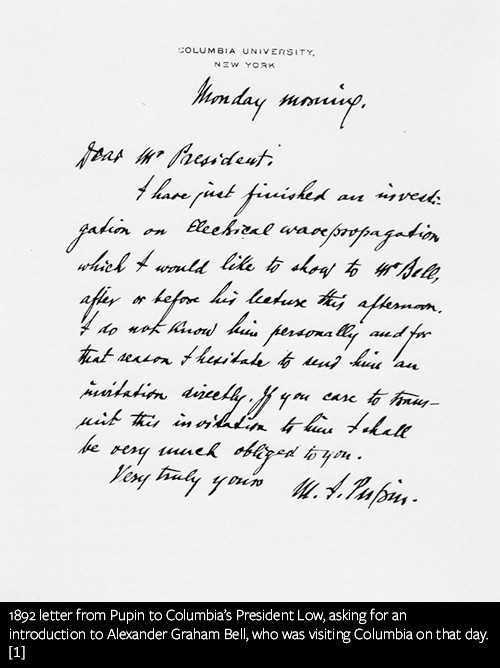
Pupin, the second faculty member, represented another important contribution to electrical engineering—he was a physicist who was inspired by both fundamental science and practical invention. Pupin was also the first of a long line of immigrant scholars who have contributed immensely to Columbia's vitality and intellectual strength. Pupin arrived penniless in the U.S. from a small Serbian village, graduated from Columbia, and received graduate training in electricity and electromagnetism in England and Germany. He became an early proponent of AC power transmission (placing him at odds with the established interest in DC), and later developed inductively loaded transmission lines, making possible long-distance telephone communications. His efforts to establish the latter are reflected in a letter from Pupin to Columbia President Seth Low requesting an introduction to Alexander Graham Bell, during Bell's visit to the University in 1892. A more detailed letter, also to Low, explains an arrangement with the American Bell Telephone Company for a $1,000 experiment to test Pupin's ideas. Pupin served also as a mentor for the first graduate students—both Edwin Howard Armstrong and John H. Morecroft received their early inspiration from him. Later in his life he played a critical role in starting the National Research Council, as well as in developing medical imaging technology.
[1] Image credit: University Archives, Rare Book & Manuscript Library, Columbia University Libraries.